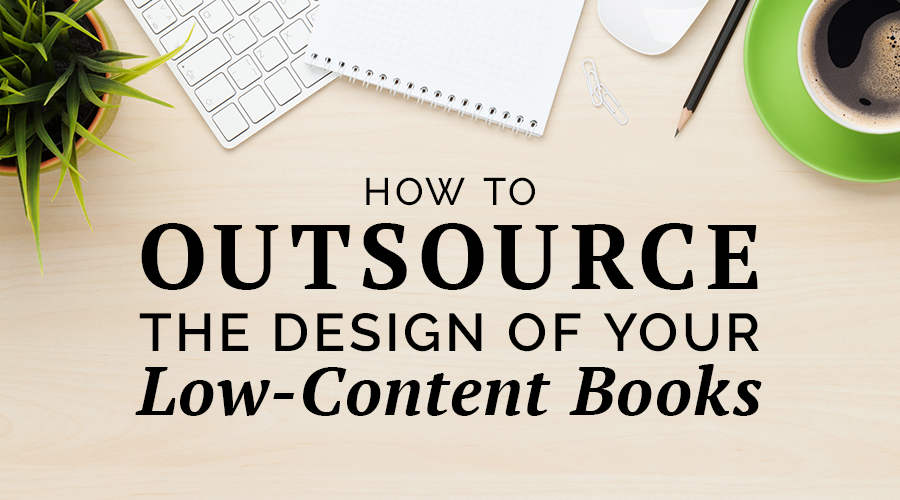
Probably the most intimidating part of deciding to pursue low-content publishing as a passive income business model is the prospect of designing your own book. Almost everyone I have described my business to says something along the lines of, “I’d really love to do something like that, but I’m not a designer.”
Valid point.
How are you supposed to create a professional-looking book that a real person will actually take their wallet out to purchase, if your artistic capabilities never developed beyond the stick figure drawings that your mom used to pin to the fridge when you were 5?
If there’s even a remote chance that you might somehow enjoy the process of learning how to create your own interior files and book covers, then I always recommend giving Canva a shot first. Canva is an amazing free online tool that even complete newbs can use to quickly design beautiful covers and interiors. If you want to take a bash at it, take a look at my video tutorial, How to Design Your Own Book Cover in Under 10 Minutes, Using Canva. Or, if you’re already somewhat proficient in either Microsoft Word or PowerPoint, you can even create your files there.
If even the slightest thought of doing any design work gives you the “no” feeling, don’t despair. You can STILL take advantage of this business model by outsourcing this part of the process.
One of the best things about living in this period in time is the tremendous amount of resources available to us through an internet connection. It’s now so easy to outsource even the smallest of tasks, at competitive rates, to people all over the world.
The two main outsourcing platforms I’ve personally used are Upwork and Fiverr. Let’s take a look at each.
Upwork
I’ve used Upwork extensively over the past few years, mainly for VA, writing, and bookkeeping services, as it’s a great place to find freelancers for ongoing work.
The way it works is you post a project description (eg. Book Cover Design), along with your budget, and then receive a list of freelancers that Upwork instantly matches you with, based on your project requirements. You’ll also receive proposals from interested freelancers. From there, you can view samples of the freelancer’s work, ask them any questions you might have, and even set up a remote interview.
After hiring the freelancer that you think best fits your project, your freelancer will complete the project in the agreed upon timeframe, making any necessary revisions. You’ll be able to request specific stock imagery and/or send them examples of styles you like for inspiration. You’ll then pay the freelancer through the Upwork platform. You can find out more here.
Fiverr
Fiverr operates a little differently than Upwork. Each seller on Fiverr has a service that they offer, called a “gig”. When you want to complete a project using Fiverr, you’ll use the search bar for the type of service you’re looking for (ex. Book Cover Design), and you’ll be shown a list of related gigs, along with their fee. From there you can browse the gigs, including samples of their work, usual turnaround time, and customer ratings, until you find one you like. You’ll then place your order with a single click, paying up front for the work rather than after it’s been completed. You also be able to message the seller with any specific instructions you have, send them any stock imagery you’d like them to use, and send them examples of styles that you like for inspiration. For more details, check out their How Fiverr Works page.
Which Platform is Better?
When it comes to book cover design, in my experience Fiverr has been both much cheaper and faster—book covers can cost as little as $10 and they’re ready within just a few days.
When I was publishing fiction books, I personally used them multiple times to design book covers when I was short on time and attempting to scale my business more quickly.
What about book interiors?
Since interiors aren’t quite as straightforward as covers, I’d probably spend a bit of time exploring both platforms to see where the best value was. And the wonderful thing about low-content book interiors is that once you have one designed interior, you can use it again and again and again, for as many different books as you want!
For example, if I create an interior for a lined journal, I can use that same interior file for a dog-themed journal, one with a floral motif, another with a geometric pattern—whatever I can possibly think up.
Another option is using PLR templates. PLR stands for private label rights, and these are templates that you can buy and then resell under your own pen name, with your own book cover. You can do a quick Google search and find a bunch of websites where you can get these types of templates.
So, now that the design part of the process has been completely removed from the equation, are you ready to learn the process of creating a low-content publishing passive income stream?
FREE GUIDE: 3 Steps to Publishing Your First Low-Content Book in Less Than a Day
MORE LOW-CONTENT PUBLISHING TIPS: https://www.rachelharrisonsund.com/
Do you have experience using a freelancing platform to outsource creative work? Let me know if you have a specific one that you recommend.
